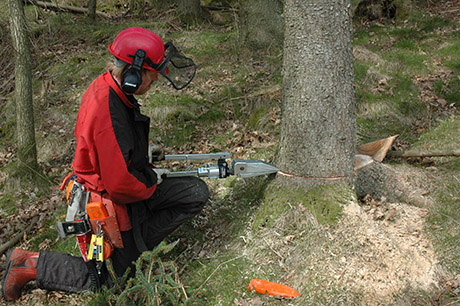Blossoming Benefits: How Horticulture Nurtures Our Environment
In the green tapestry of our planet, horticulture stands as a vital thread that weaves together the harmony between humans and nature. The practice of cultivating and nurturing plants goes beyond the mere act of planting seeds and tending to flowers; it fundamentally nurtures the very essence of our environment. As we delve into the depths of its significance, we uncover a world enriched by the bountiful benefits that horticulture bestows upon us.
At the heart of horticulture lies a profound connection that intertwines the well-being of our environment with the actions we take to preserve it. The lush canopy of trees that dance with the breeze, the vibrant blooms that paint valleys with colors, and the gentle rustle of leaves underfoot create a symphony of life that nurtures not just our surroundings but also our spirits. However, amid this splendor, the stark reality of tree felling often casts a shadow over the beauty horticulture embodies.
Environmental Impact of Tree Felling
When it comes to tree felling, the environmental repercussions can be significant. Trees play a crucial role in maintaining the ecological balance by absorbing carbon dioxide and releasing oxygen into the atmosphere. Therefore, the felling of trees can lead to a decrease in air quality and disrupt the delicate balance of gases in the air.
In addition, trees provide essential habitats for various species of wildlife. When trees are felled, these creatures lose their homes and food sources, leading to a disruption in the local ecosystem. This can result in a decline in biodiversity and have far-reaching effects on the entire ecosystem.
Furthermore, the process of tree felling can contribute to soil erosion and water pollution. Tree roots help anchor the soil in place, preventing erosion, and also play a role in regulating the water cycle. Without trees, soil erosion can increase, leading to sedimentation in water bodies and a decrease in water quality.
Sustainable Alternatives

When it comes to addressing the issue of tree felling, it is crucial to consider sustainable alternatives that can help preserve our precious natural resources. Instead of resorting to indiscriminate tree cutting, one effective approach is to promote responsible forestry practices. This entails selectively harvesting trees in a controlled manner to ensure the regeneration of forests for the future.
Apart from sustainable forestry practices, another alternative to excessive tree felling is the promotion of agroforestry systems. By integrating spez-ag into agricultural landscapes, farmers can benefit from the myriad advantages that trees offer while still meeting their agricultural needs. Agroforestry not only helps combat deforestation but also enhances soil health, water conservation, and biodiversity.
Furthermore, investing in urban greening initiatives presents a viable sustainable alternative to tree felling in urban areas. By planting more trees and creating green spaces within cities, we can mitigate the adverse effects of urbanization on the environment. Urban greenery not only improves air quality and provides habitat for wildlife but also contributes to the overall well-being of urban residents.
Community Conservation Efforts
Communities play a vital role in the preservation of our natural habitat, especially in the face of increasing tree felling activities. By actively engaging in horticultural practices, such as tree planting and maintenance initiatives, individuals and groups are able to contribute directly to the restoration and protection of local ecosystems. Through collaborative efforts, communities can help counteract the negative impacts of deforestation and promote a healthier environment for all living beings.
One of the key benefits of community-led conservation projects is the sense of empowerment and ownership they instill among participants. By working together to plant trees, establish green spaces, and nurture gardens, communities develop a stronger connection to the land and a shared responsibility for its care. This heightened awareness can lead to long-lasting positive change, inspiring individuals to take proactive steps to protect the environment and advocate for sustainable practices.
Furthermore, community conservation efforts serve as a platform for education and knowledge sharing. Through workshops, seminars, and hands-on activities, participants not only learn about the importance of horticulture in environmental conservation but also acquire practical skills that can be applied in their own neighborhoods. By fostering a culture of environmental stewardship, these initiatives create a ripple effect that extends beyond the immediate community, influencing attitudes and behaviors toward nature and sustainability.